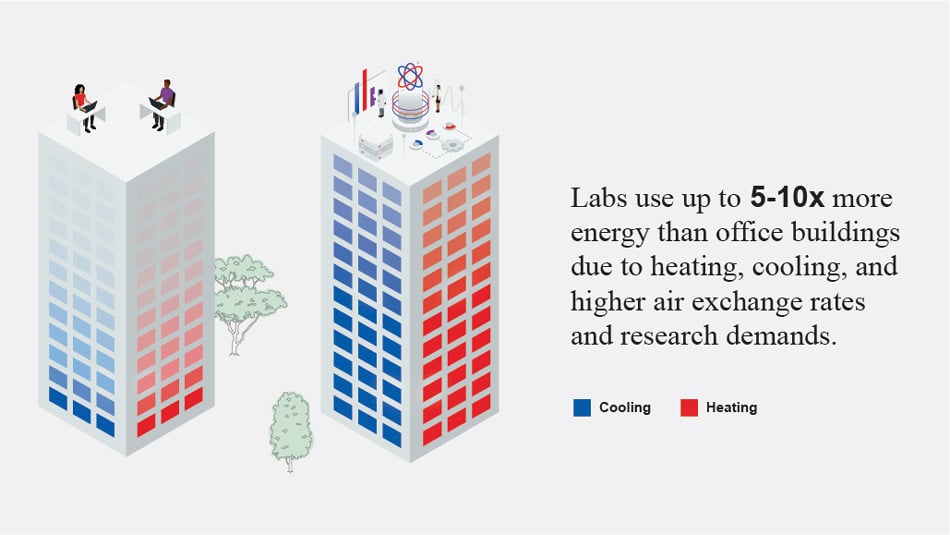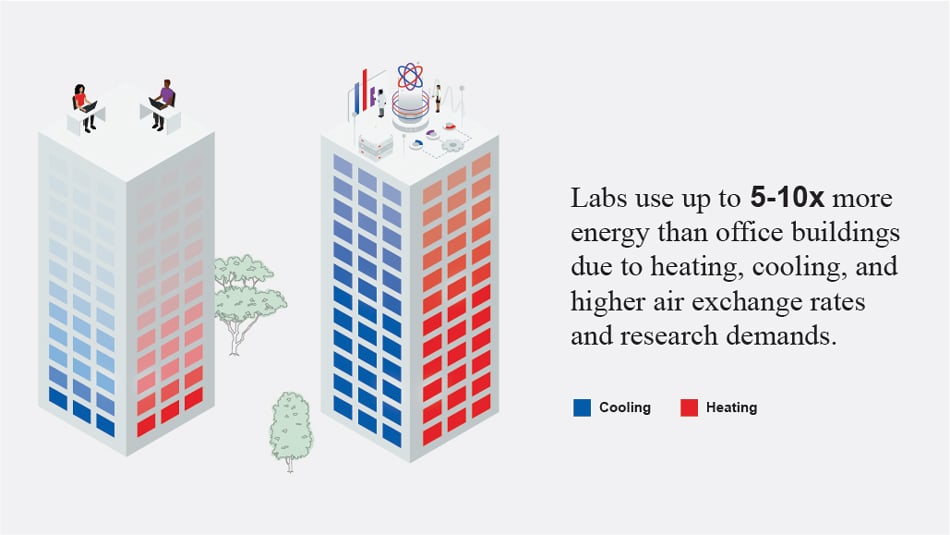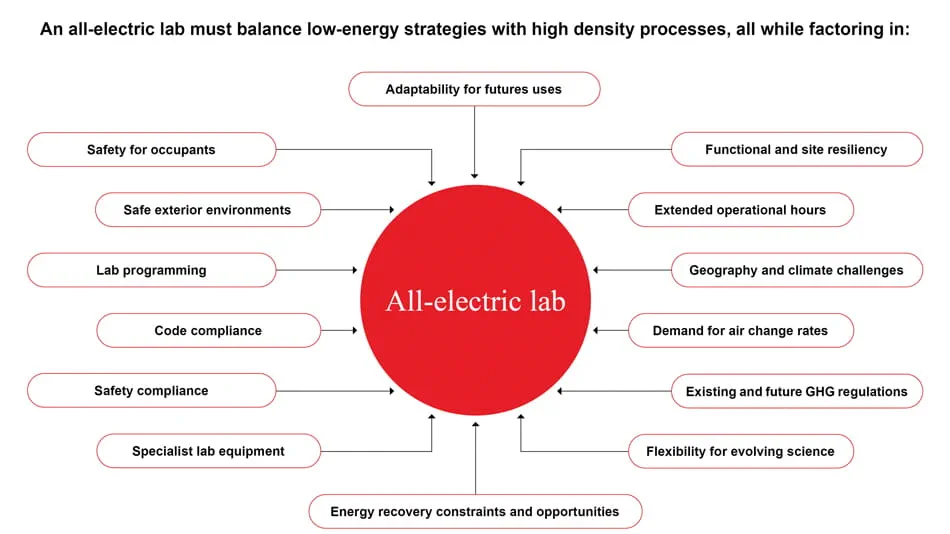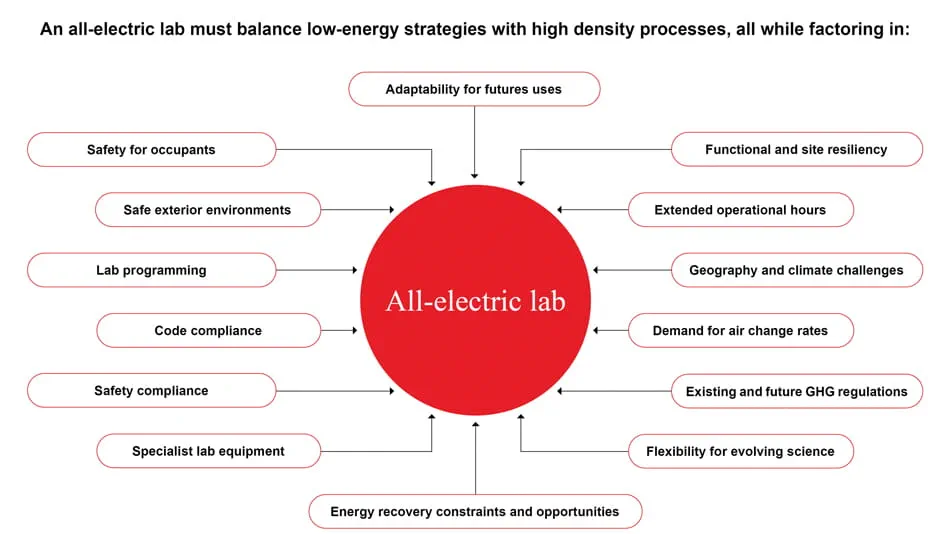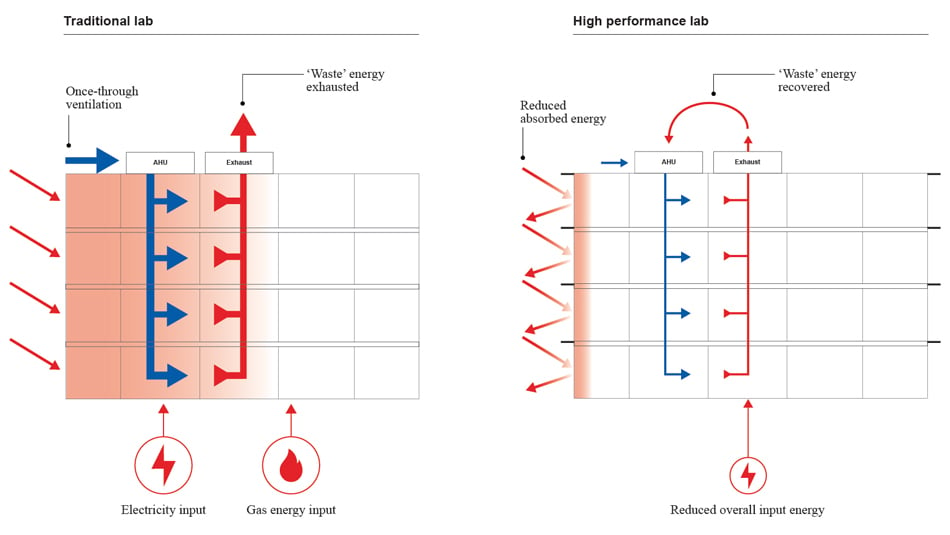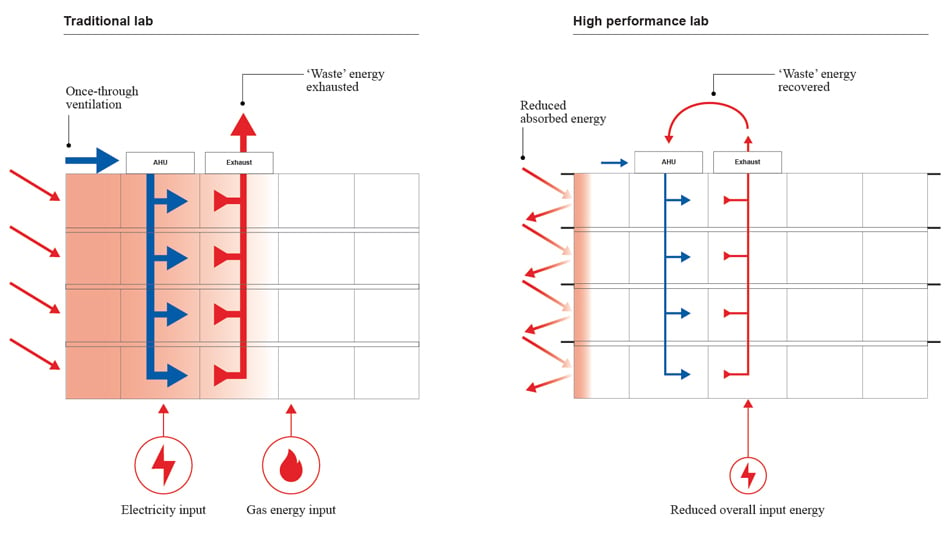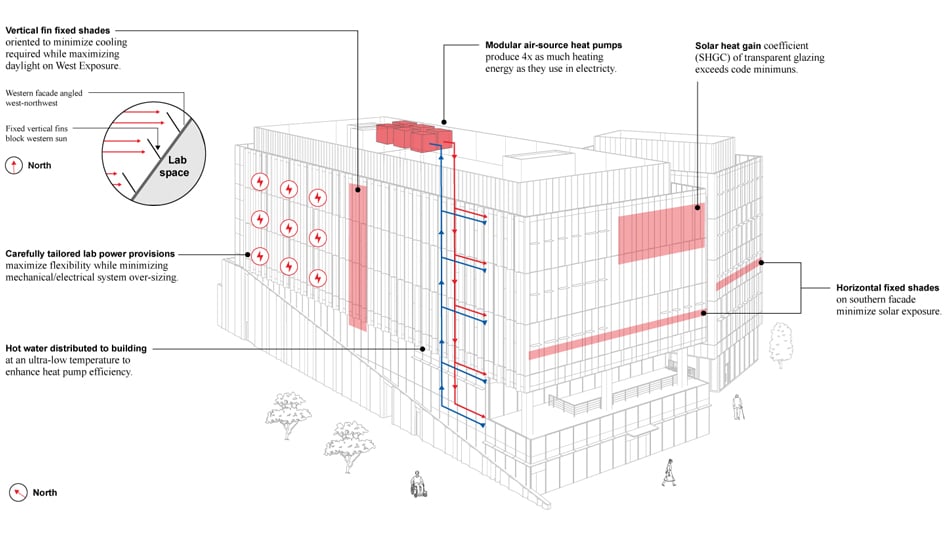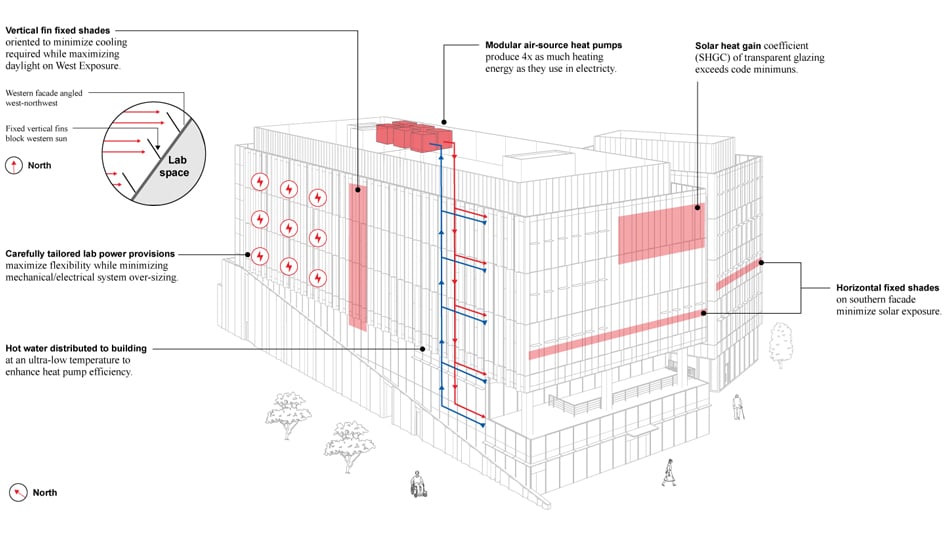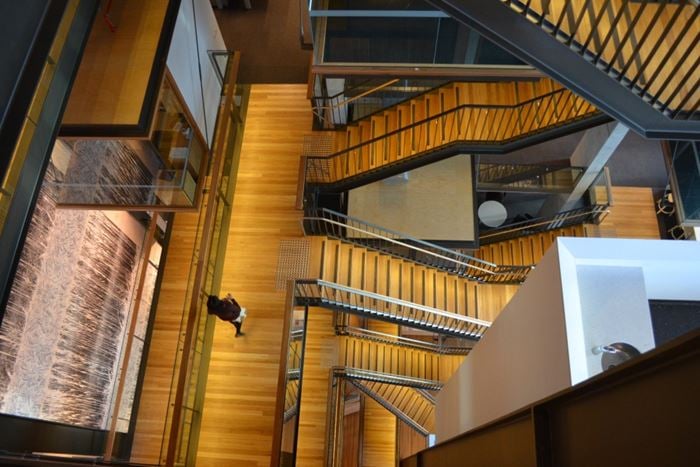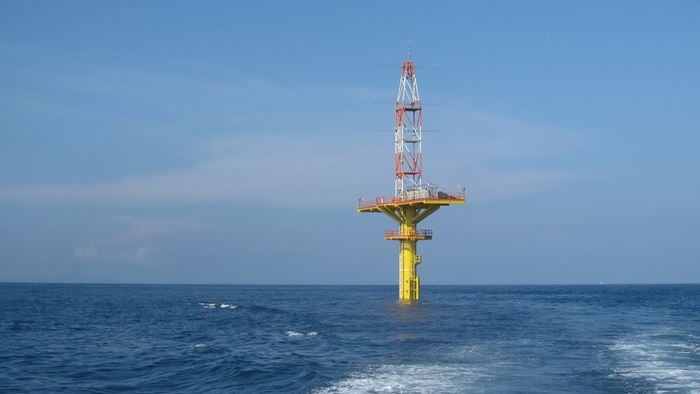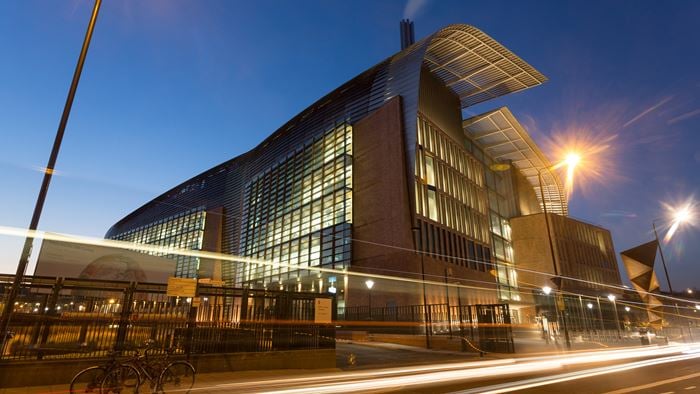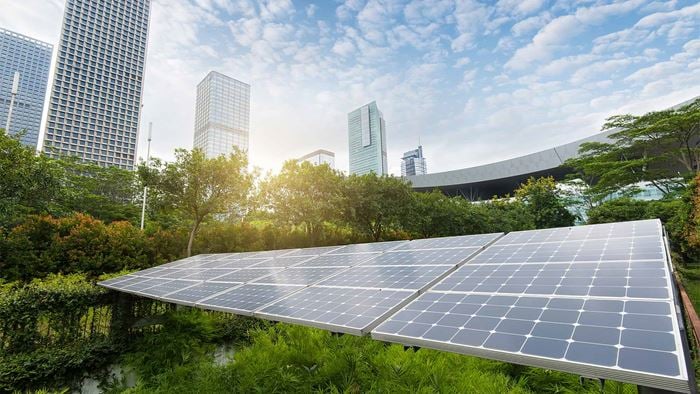This article is authored by Jennifer DiMambro and Andrew Clark
With buildings accounting for 40% of carbon emissions in the United States, it is critical to advance the decarbonization of energy-intensive building types such as laboratories used in higher education, commercial life sciences, and for other forms of research and development. The Department of Energy estimates that a typical lab building consumes up to five to ten times more energy per square foot than an average office building. These highly complex facilities support activities that require significant ventilation and energy-intensive equipment.
For a university, this can translate into up to 70% of a campus’ total emissions. For developers of core and shell spec labs, a low energy and emissions footprint can be a key selling factor for tenants. Not surprisingly, the all-electrified lab is becoming an industry-wide trend, especially in established and emerging research markets across the United States, including California, the Pacific Northwest, the Eastern Seaboard, the Research Triangle, and others.
Mitigating energy-intensive impact
The outsized impact on carbon emissions from laboratories makes it especially urgent for lab owners and developers to design all-electric labs as well as to electrify existing assets. Fully electrifying a lab building entails elimination of all on-site use of fossil fuels and electrifying all systems from building operations to the specific process systems serving the research program.
While the ability to eliminate operational carbon is highly dependent on the generation make-up of the local electrical grid, every grid is anticipated to get “cleaner” over time. In contrast, buildings that use fossil fuels can never reduce emissions without a major overhaul. And new labs constructed today are likely to remain in their current configurations for approximately 50 years, creating a legacy of carbon emissions over that period.
An all-electric future
Across the US, state and local governments are rolling out regulations and policies that set specific energy and GHG targets for operational energy. This means both lab owners and developers are increasingly hearing about and discussing the move towards electrification. Speculative demand is also driving conversions of offices, warehouses, and other building types to commercial life science labs. Additionally, with an eye toward their long-term investments and mindful of the appeal of green credentials for tenants, financiers are urging their development partners to deliver all-electric buildings.
Compounded challenges
While the urgency for all-electric labs is indisputable and the interest is strong, the intensity of the demands from lab ventilation requirements as well as the high-power density needed to support research programming makes these facilities especially challenging to electrify and decarbonize. The biggest energy draw in a lab building tends to be space conditioning to heat, cool, and circulate air at high air change rates to preserve occupant health and safety — in some cases up to five to ten times the air exchange requirement for an office space. The need for extended operational hours compounds intensive energy requirements as does the need for resilient systems with emergency power back-up.
Added to this, the diverse scientific disciplines engaged in laboratory work involve vastly different processes, equipment, programming, and requirements, all of which must be factored into electrification approaches. As Arup’s Future Labs report noted, life science and research practices are in continual evolution, making it imperative that labs are designed with the flexibility to progress with the scientific research ecosystem.
Other key variables to consider include geographic location and corresponding climate implications. Moderate annual climates such as in Southern California can reduce the significant impact of ventilation demands. More dynamic climates, such as the East Coast’s, require careful balancing of loads and aggressive energy recovery strategies. Depending on the climate, air-source or ground-source heat pumps — or a combination thereof — may be the most appropriate solution. Geography and climate challenges will also dictate solutions for resilience, which can be as varied as providing resilient heating in cold climates to considering wildfire impacts on ventilation systems.
Not least, the existing and expected codes and standards related to decarbonization vary by state and local government. For lab retrofits, it is important to be aware of future trends, such as New York City’s Local Law 97, which, beginning in 2024, includes levies on emissions of existing buildings. In addition to designing for anticipated climate policy, lab owners and developers face the challenge of planning for the long lead times related to equipment procurement.
Accelerating lab electrification
A common assumption is that given the energy-intensive nature of labs, electrifying them will lead to untenable electricity use and respective utility costs. However, by making energy-efficient strategies paramount — such as with a high-performance building and a range of energy-efficient strategies — a laboratory can significantly minimize the impact of electrification. Whereas a traditional fossil fuel-powered lab relies on prescriptive methods for air change rates and lab exhaust dilution to maintain occupant safety and heating and cooling, a thoughtfully designed all-electric facility can uphold critical criteria while reducing demands on its electrical infrastructure. This can be achieved with efficient central heating and cooling equipment, such as high-performance energy recovery solutions. Additionally, high-performance building envelopes are a critical strategy for minimizing the impact of external loads.
To heat and cool electric labs, designers can leverage key technologies for mechanical systems that work well in tandem with heat pumps, such as chilled beams or other hydronic-based systems. Employing heat pumps, air-to-air, and water-to-water energy recovery, and demand response strategies for ventilation is critical to maintaining a safe environment while also reducing energy use. Ventilation strategies such as dynamic and targeted air-sampling systems are more efficient and effective than the traditional “one-size-fits-all” approach.
High-energy process uses, such as for cleaning and sterilization equipment that require elevated temperatures and pressure, can be mitigated with all-electric autoclaves and glass washers instead of steam-fed equipment. To design for today’s industry standards and future needs, labs can both opt for electric laboratory equipment and provide a wide variety of plug load needs that support a range of mechanical equipment and lab processes.
Electrification also enables accessible data on energy use, as well as on smart and individual controls where appropriate, which can increase efficiency as well as occupants’ awareness of the impact of their behavior on energy usage.
Managing manifold variables
New technologies are making electrification of labs increasingly feasible, mitigating the challenge of designing them within the already dynamic scientific lab landscape. Nevertheless, electrifying laboratory buildings is not an off-the-shelf enterprise. While decarbonization is a key driver for all-electric lab design, it must be balanced against the primary precept of a laboratory building — to provide a safe environment that enables science. Thus, oftentimes designing an all-electric lab requires carefully managing competing yet critical variables.
Pioneering the all-electric lab
The Viterbi Family Vision Research Center at the University of California, San Diego’s La Jolla campus, currently under development, exemplifies the challenges and possibilities of electrifying labs. It will be an all-electric facility, in keeping with UC Office of the President's decarbonization mandate, and is targeting LEED Gold. At the same time, the program presents significant challenges given the energy-intensity of its space needs, including wet and dry laboratories and demanding research support areas.
The building is designed for flexibility to meet present and future research needs, which, while common in most life sciences-related projects, is more complex for an owner-operator with a long-time horizon and indefinite future research needs. UCSD’s robust sustainability expectations for the building’s operations and facilities management, which included a particular focus on environmental health and safety given the potential hazards of a wet lab, intensified design challenges.
Providing MEP services, Arup has been working closely with UCSD, NBBJ, and the entire construction project team to review different strategies and approaches that resolve challenges and optimize solutions for a leading-edge facility. The team prioritized building optimization and efficient systems that complement each other as key strategies for managing the lab’s energy intensive requirements while minimizing energy use. The building envelope reduces energy use for cooling with varied façade treatments and glazing relative to their orientation and exposure. Systems such as air-source heat pumps work in concert with carefully optimized hot water distribution to reduce energy use and maximize efficiency, and tailored power mechanical and electrical systems allow for flexibility and future needs.
While the urgency to scale all-electric lab construction is complicated by myriad challenges, the electrification of facilities that support leading-edge research and future-focused science, such as the Viterbi Research Center, demonstrates a viable course for laboratory decarbonization. They show that thoughtful integration of energy efficient systems with building optimization allows even the most demanding lab programs to be electrified and to benefit from significant operational efficiencies and savings. Not least, such projects illuminate a way forward for the electrification of other energy-intensive building types, potentially forging a path for reducing their carbon footprint and progressing the building industry’s net zero goals.
 ;
;

